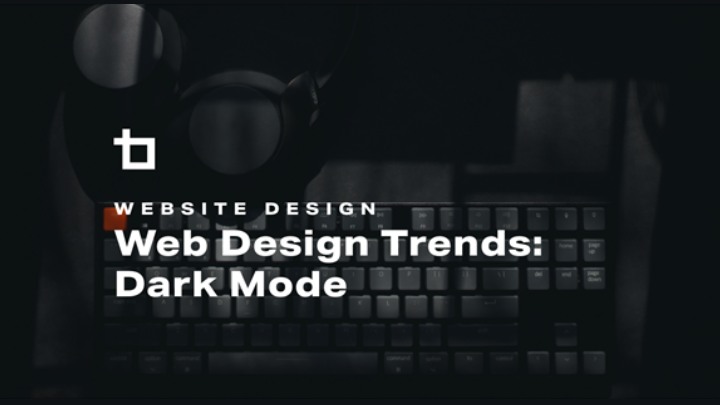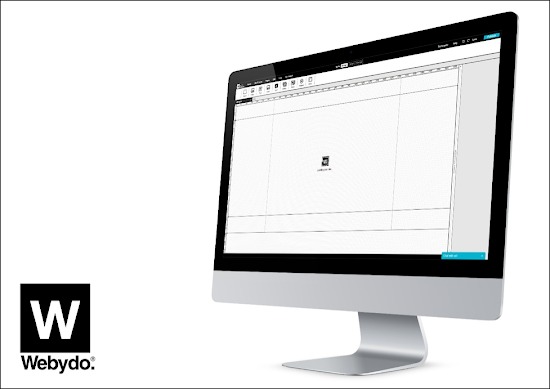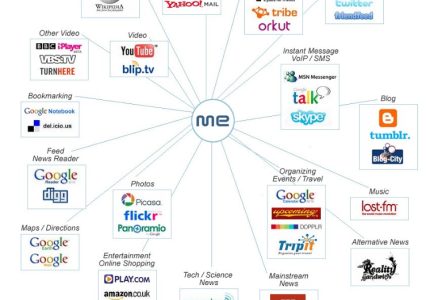Fundamentals of 3D Website Design
3D website design is an innovative approach that enhances user engagement and creates immersive online experiences. By incorporating three-dimensional visuals and interactive elements, designers can craft websites that stand out and provide a sense of depth and realism. Understanding the fundamentals of 3D design, including modeling, rendering, and user interaction, is essential for creating compelling digital environments that captivate visitors and convey information effectively.
Definition and Overview
3D website design involves creating websites that incorporate three-dimensional elements to enhance visual appeal, interactivity, and user experience. This approach leverages advanced graphics, animations, and spatial techniques to produce immersive environments that go beyond traditional flat layouts. The goal is to engage visitors through dynamic visuals, realistic textures, and depth that make websites more engaging and memorable.
Fundamentals of 3D website design include understanding core concepts such as spatial visualization, user interaction, and visual aesthetics. It requires knowledge of 3D modeling, rendering, and animation tools, as well as web technologies like WebGL, Three.js, and other libraries that enable 3D graphics within browsers. Effective 3D design also considers performance optimization to ensure smooth rendering across devices and efficient loading times.
Overall, 3D website design combines creativity with technical skills to craft visually stunning websites that deliver enhanced storytelling, brand expression, and user engagement through three-dimensional spaces and elements.
Historical Development
Fundamentals of 3D website design focus on creating immersive and interactive digital environments that engage users through three-dimensional visual elements. This approach enhances user experience by providing depth, realism, and a sense of presence, making websites more dynamic and visually appealing. Understanding the core principles involves grasping the key techniques, tools, and storytelling methods used to develop compelling 3D websites.
The historical development of 3D website design reflects advancements in technology, software, and user interface expectations. Early experiments with 3D in web design began in the late 1990s with simple animations and interactive graphics. As browser capabilities evolved and GPU technology improved, more sophisticated 3D graphics became possible directly within web browsers.
- Introduction of WebGL: The emergence of WebGL revolutionized 3D web design by allowing hardware-accelerated graphics without the need for additional plugins. This enabled developers to create complex and interactive 3D scenes directly in browsers.
- Advancement of 3D Engines: Tools like three.js and Babylon.js simplified the development process by providing libraries that manage rendering, animation, and interactions, making 3D website design more accessible to developers.
- Integration of VR and AR: The rise of virtual reality and augmented reality technologies further expanded the possibilities for 3D websites, allowing users to experience virtual environments seamlessly through web interfaces.
- Increased Mobile Compatibility: As mobile devices gained prominence, responsive and lightweight 3D designs were developed to ensure performance across various hardware capabilities.
- Current Trends: Today, 3D website design incorporates real-time rendering, procedural generation, and immersive storytelling, emphasizing user engagement and innovative visual storytelling methods.
Key Principles and Concepts
3D website design involves creating interactive and visually immersive websites by integrating three-dimensional elements into the web environment. This approach enhances user engagement and offers an innovative way to showcase products, services, or content. The fundamentals of 3D website design focus on understanding the key principles that ensure a functional and aesthetically appealing experience.
One of the key principles is spatial awareness, which involves designing with a sense of depth, perspective, and realism to accurately simulate a three-dimensional space. Proper use of lighting, shading, and textures plays a crucial role in enhancing realism and guiding user attention within the 3D environment. Additionally, intuitive navigation is essential; users should easily explore interactive elements without feeling disoriented.
Designers must also consider performance optimization to ensure smooth interactions across devices and browsers. This involves balancing high-quality visuals with efficient coding and asset management. Accessibility is another important concept, making sure that 3D content remains usable for all users, including those with disabilities, through proper contrast, controls, and alternative navigation options.
Finally, consistency in style and branding across the 3D elements helps maintain a cohesive user experience. Integrating 3D models effectively with 2D interface components creates a seamless hybrid environment that leverages the strengths of both dimensions. By adhering to these key principles and concepts, designers can create compelling, functional, and aesthetically pleasing 3D websites that captivate and engage visitors.
Tools and Technologies for 3D Web Design
Tools and technologies for 3D web design have revolutionized the way websites engage users by creating immersive and interactive experiences. Utilizing advanced software, frameworks, and programming languages, designers can craft dynamic three-dimensional content that enhances visual appeal and functionality. These innovative tools enable the development of visually stunning websites that seamlessly blend creativity with cutting-edge technology, making digital interactions more engaging than ever before.
WebGL and Three.js
Tools and technologies such as WebGL and Three.js have revolutionized 3D web design by enabling developers to create immersive and interactive 3D experiences directly within web browsers. WebGL (Web Graphics Library) is a low-level API that provides hardware-accelerated 3D graphics without the need for additional plugins, allowing for high-performance visualizations across various devices. Three.js acts as a powerful JavaScript library built on top of WebGL, simplifying complex 3D rendering tasks and offering a comprehensive set of tools, including geometry creation, lighting, shading, animation, and control systems. These technologies work together to facilitate the development of dynamic, visually rich websites that enhance user engagement and provide innovative ways to present content. Many developers utilize comprehensive editors, 3D modeling software, and integrated development environments (IDEs) alongside WebGL and Three.js to streamline their workflow in creating stunning and performant 3D web applications. Overall, the synergy between these tools opens up new possibilities for 3D website design, making it more accessible and versatile for designers and developers alike.
Babylon.js and A-Frame
Tools and Technologies for 3D Web Design play a crucial role in creating immersive and interactive online experiences. Two popular frameworks in this domain are Babylon.js and A-Frame, each offering unique capabilities for developers.
Babylon.js is a powerful, open-source JavaScript framework dedicated to building 3D games and visualizations directly within web browsers. It provides a comprehensive set of features including physics, animations, and advanced rendering techniques, making it suitable for complex 3D web applications. Its robust API allows developers to create detailed and realistic 3D environments with relative ease.
A-Frame, on the other hand, is a web framework built on top of HTML and JavaScript, aimed at simplifying the creation of virtual reality experiences. It uses an entity-component system and declarative HTML syntax, which enables developers to craft 3D scenes with less coding and more visual clarity. A-Frame is highly compatible with WebVR and WebXR, facilitating the development of immersive VR content for the web.
Both Babylon.js and A-Frame harness the capabilities of WebGL, the web graphics API, to render high-performance 3D graphics directly in browsers. They also integrate with various tools and libraries for physics, sound, and user interaction, expanding the potential for innovative 3D web design. Selecting the appropriate tool depends on project requirements, whether it’s detailed 3D modeling, VR experiences, or interactive visualizations.
3D Modeling Software Integration
Tools and technologies for 3D web design play a crucial role in creating interactive and visually stunning websites. These tools enable designers to develop immersive user experiences by integrating 3D models and animations seamlessly into web pages. Modern 3D modeling software such as Blender, Autodesk Maya, and 3ds Max provide robust features for creating detailed 3D assets that can be exported and utilized in web environments.
In addition to traditional 3D modeling programs, specialized libraries and frameworks like Three.js, Babylon.js, and A-Frame facilitate the implementation of 3D content on websites. These technologies allow developers to render 3D objects directly within web browsers using WebGL, ensuring broad accessibility without the need for plugins. Integrating these tools with web development frameworks enhances the workflow, making it easier to embed complex 3D visualizations into websites.
Furthermore, asset management and optimization tools such as Adobe Substance Painter and various compression utilities help streamline the process by preparing 3D models for efficient web delivery. The combination of these modeling and integration tools empowers designers to develop captivating 3D websites with realistic visuals, animations, and interactive elements that elevate user engagement and showcase products or concepts effectively.
Design Elements in 3D Websites
Design elements play a crucial role in creating immersive and visually engaging 3D websites. They encompass the careful use of shapes, colors, textures, and lighting to establish depth and realism. By thoughtfully integrating these elements, designers can craft interactive experiences that captivate users and enhance overall functionality. Understanding how to effectively utilize design components in a 3D environment is essential for innovative web development and memorable user interactions.
Geometric Shapes and Structures
Design elements in 3D websites play a crucial role in creating engaging and immersive user experiences. Incorporating geometric shapes and structures adds depth, visual interest, and clarity to the overall layout. These elements can be abstract or precise, helping to guide users’ attention and emphasize key content. Using geometric forms like cubes, spheres, pyramids, and complex polygons allows designers to craft dynamic environments that feel modern and innovative. The careful integration of these shapes within 3D spaces enhances navigability and interaction, making the website both aesthetically pleasing and functionally effective. Overall, thoughtful use of geometric structures in 3D website design elevates the visual appeal and user engagement, setting a site apart in the digital landscape.
Textures and Materials
Design elements in 3D websites play a crucial role in creating an immersive and engaging user experience. Textures and materials are essential components that add depth, realism, and visual interest to the digital environment. By carefully selecting and applying different textures, designers can mimic real-world surfaces such as wood, metal, or fabric, enhancing the tactile quality of the virtual space. Materials in 3D websites often involve the use of reflective, matte, or transparent finishes that influence how objects interact with light, making scenes more dynamic and lifelike. Incorporating appropriate textures and materials contributes to the overall aesthetic, guiding users’ attention and evoking specific emotions while exploring the site. Effective use of these elements helps convey brand identity and aesthetic style, making the online experience memorable and visually appealing.
Lighting and Shadows
Design elements in 3D websites play a crucial role in creating immersive and engaging user experiences. Incorporating depth, dimension, and realistic details make navigation more intuitive and visually appealing. Lighting and shadows are essential components that enhance the three-dimensional effect, adding realism and depth to the digital environment.
Proper lighting techniques in 3D website design help define objects, highlight important features, and guide user attention. Dynamic lighting can create mood and atmosphere, making the website feel more alive and inviting. Shadows complement lighting by grounding objects within the scene, giving a sense of spatial relationships and movement.
Effective use of shadows and lighting not only improves aesthetic quality but also enhances usability, helping users intuitively understand the structure of the website. When combined thoughtfully, these elements contribute to a more realistic and engaging virtual space, elevating the overall design and user experience of a 3D website.
Implementation and Development Processes
Implementation and development processes are essential stages in creating a compelling 3D website design. These phases involve transforming conceptual ideas into functional and interactive digital environments, ensuring that the design elements work seamlessly across various devices and platforms. A structured approach to development allows for efficient problem-solving, quality assurance, and the integration of innovative 3D features that enhance user engagement and visual appeal.
Creating 3D Models
Implementation and development processes in 3D website design involve a series of structured steps to transform conceptual ideas into functional and visually appealing 3D environments. These processes typically start with detailed planning and design specifications, followed by the creation of 3D models that form the core visual elements of the website. During this phase, artists and developers utilize specialized software such as Blender, Maya, or 3ds Max to craft accurate, high-quality models that meet the project’s aesthetic and functional requirements.
Once the 3D models are created, they are optimized for web use, ensuring quick load times and smooth interactions. This involves reducing polygon counts, compressing textures, and implementing formats compatible with web technologies like WebGL or Three.js. The next stage focuses on integrating these models into the website, utilizing scripting and programming practices to enable user interaction, navigation, and dynamic content updates. Throughout this process, testing across different devices and browsers guarantees a seamless user experience.
Finally, iterative refinement and feedback incorporation are essential, as developers adjust visual elements, improve performance, and add functionalities. The development process in 3D website design demands a combination of creative skills and technical expertise to produce immersive digital experiences that captivate users and effectively convey the intended message or branding.
Integrating 3D Content into Websites
Implementation and development processes for integrating 3D content into websites involve a combination of design, coding, testing, and optimization to ensure a seamless user experience. These processes typically start with selecting suitable 3D frameworks or libraries such as Three.js, Babylon.js, or WebGL that facilitate rendering 3D graphics within web browsers. Developers then create or source 3D models that align with the website’s purpose and aesthetic, optimizing these assets for quick loading and efficient performance. During development, integrating interactive elements like navigation controls, animations, and responsive behavior is essential to enhance user engagement. Testing across various devices and browsers ensures compatibility and smooth rendering. Finally, optimization techniques like compression, level of detail adjustments, and lazy loading are employed to improve load times and responsiveness. Effective integration of 3D content thus enhances the visual appeal of websites, providing immersive experiences that captivate visitors and elevate overall site functionality within the realm of 3D website design.
Optimization for Performance
Implementation and development processes in 3D website design involve translating conceptual models into functional, interactive digital environments. This requires careful planning, choosing appropriate technologies such as WebGL or Three.js, and ensuring seamless integration with existing web frameworks. Developers focus on creating immersive experiences by optimizing asset management, scripts, and rendering pipelines to ensure smooth performance across various devices and browsers.
Optimization for performance is crucial in 3D website design to deliver quick load times and responsive interactions. Techniques include reducing polygon count, compressing textures, and implementing level of detail (LOD) strategies. Efficient coding practices, such as batching draw calls and minimizing memory leaks, contribute significantly to enhanced user experience. Regular testing and profiling help identify bottlenecks, allowing developers to refine their assets and scripts for optimal performance without compromising visual quality.
User Experience and Interaction
User Experience and Interaction are essential aspects of creating engaging and effective websites. They focus on how users perceive and interact with a site, ensuring that navigation is intuitive and the overall experience is satisfying. In the context of 3D website design, these elements become even more critical, as immersive visuals and interactive features can enhance user engagement and provide a memorable browsing experience.
Navigational Controls
In 3D website design, User Experience and Interaction play a crucial role in engaging visitors and guiding them seamlessly through complex visual environments. Effective navigational controls are essential to help users explore the three-dimensional space intuitively and comfortably. These controls often include keyboard and mouse inputs, touch gestures, or custom interactive elements that allow for smooth rotation, zooming, and panning within the 3D scene. Designers should focus on creating clear, responsive controls that respond promptly to user actions, minimizing confusion and enhancing immersion. Additionally, providing visual cues or hints for navigation can improve overall usability, ensuring that users feel confident and in control while exploring the website’s dynamic and interactive 3D elements.
Interaction Techniques
User experience and interaction are vital components in 3D website design, as they determine how users perceive and navigate complex environments. In 3D websites, creating intuitive and seamless interactions is essential to keep users engaged and prevent disorientation. Effective interaction techniques include navigation controls such as orbit, pan, and zoom, which allow users to explore three-dimensional spaces naturally. Incorporating gesture-based controls and mouse movements can enhance immersion, making the experience feel more interactive and responsive. Additionally, integrating hotspots or clickable objects within the 3D environment enables users to access additional information or functionality smoothly. A well-designed 3D website prioritizes clarity, consistency, and ease of use, ensuring that users can enjoy a compelling visual experience without frustration. Ultimately, thoughtful interaction techniques not only improve usability but also elevate the overall aesthetic and engagement level of a 3D website.
Real-time Feedback and Animations
In 3D website design, User Experience (UX) and Interaction are crucial for creating engaging and immersive digital environments. Incorporating intuitive controls and seamless navigation ensures users can explore complex scenes effortlessly, enhancing overall satisfaction. Real-time feedback plays a vital role by providing immediate responses to user actions, such as highlighting objects on hover or updating content dynamically, which fosters a sense of control and interactivity. Animations in 3D websites contribute to a more realistic and captivating experience by smoothly transitioning between scenes, emphasizing elements, and illustrating processes. When thoughtfully implemented, these features work together to create a memorable and user-centered digital space that encourages prolonged interaction and exploration.
Responsive Design and Compatibility
Responsive design and compatibility are essential components of creating effective 3D website environments that function seamlessly across various devices and browsers. Ensuring that 3D elements adapt smoothly to different screen sizes and maintain their visual integrity enhances user experience and accessibility. A focus on compatibility allows creative 3D designs to reach a broader audience, providing engaging interactions regardless of the platform used.
Adapting to Different Devices
Responsive design and compatibility are essential aspects of creating effective 3D website experiences that adapt seamlessly across various devices. Ensuring that a 3D website functions properly on smartphones, tablets, and desktops requires careful planning and implementation.
- Utilize flexible grid layouts that adjust to different screen sizes, allowing 3D models and interactive elements to scale appropriately.
- Incorporate media queries to optimize rendering and performance for specific devices, ensuring smooth interactions regardless of hardware capabilities.
- Implement adaptive loading techniques that prioritize essential 3D assets, improving load times and responsiveness on lower-end devices.
- Ensure touch-friendly UI elements for mobile devices, facilitating intuitive interaction with 3D environments.
- Test compatibility across various browsers and devices to identify and fix inconsistencies in rendering or performance.
Cross-Browser Compatibility
Responsive design and browser compatibility are essential components of 3D website design, ensuring that users experience a seamless and engaging interface across all devices and browsers. A well-designed 3D website adapts to different screen sizes and resolutions, providing optimal viewing whether accessed on desktops, tablets, or smartphones. Achieving this involves using flexible layouts, scalable graphics, and adaptive techniques that respond to varying device capabilities. Compatibility across browsers is equally important, as each browser may render 3D elements differently. Developers often utilize standardized WebGL, CSS3, and JavaScript to create consistent 3D effects, along with thorough testing across popular browsers to address discrepancies. Prioritizing both responsiveness and cross-browser compatibility results in more accessible, visually appealing, and user-friendly 3D websites that meet diverse user needs and expectations.
Accessibility Considerations
Responsive design and compatibility are crucial elements in 3D website design to ensure a seamless user experience across various devices and browsers. By implementing flexible layouts, scalable images, and adaptable 3D models, designers can cater to smartphones, tablets, and desktops without compromising visual quality or functionality. Compatibility testing across multiple platforms helps identify and resolve issues related to different rendering engines or hardware capabilities, ensuring the 3D content loads correctly and performs smoothly. Accessibility considerations in 3D website design involve providing alternative text for 3D models, offering keyboard navigation options, and incorporating adjustable settings for visual impairments. These practices make immersive 3D environments more inclusive, allowing users with diverse abilities to explore and interact effectively with the content. Prioritizing responsiveness, compatibility, and accessibility ensures that 3D websites deliver engaging and user-friendly experiences to a broad audience, regardless of their device or disability.”
Use Cases and Applications of 3D Web Design
3D web design has revolutionized the way businesses and creators engage with their audiences by offering immersive and visually captivating experiences. Its diverse applications span across industries such as e-commerce, gaming, education, and real estate, where interactive three-dimensional content enhances user engagement and understanding. With advancements in technology, 3D web design continues to expand its possibilities, making websites more dynamic, informative, and compelling for users worldwide.
Advertising and Marketing
3D website design has revolutionized the way businesses approach advertising and marketing by offering immersive and engaging experiences that captivate users. It allows brands to showcase their products in a realistic and interactive manner, enhancing customer engagement and understanding. Use cases include virtual product demonstrations, which enable potential buyers to examine items from every angle, increasing confidence and reducing purchase hesitation. Additionally, 3D interactive advertisements can create memorable brand stories, making marketing campaigns more effective. In sectors like real estate, 3D web design assists in virtual tours of properties, providing a detailed view without physical visits. Similarly, automotive companies utilize 3D visualizations to allow customers to customize and explore vehicles online, streamlining the sales process. Overall, the application of 3D in web design elevates marketing strategies by providing dynamic, immersive, and personalized content that resonates with modern consumers seeking innovative digital experiences.
Education and Training
3D website design plays a significant role in enhancing education and training by providing immersive and interactive learning experiences. It allows educators to create virtual environments where students can explore complex concepts in a more engaging way. For example, in medical training, 3D models of anatomy enable detailed study and hands-on practice without the need for physical resources. Similarly, in engineering and architecture education, students can manipulate 3D models of structures to better understand design principles and structural dynamics.
Incorporating 3D web design in education and training also facilitates remote learning by simulating real-world scenarios online. This is especially useful in fields like aviation, military training, and industrial skills, where practical experience is crucial. Users can participate in simulations that mimic actual operations, improving proficiency and safety. Additionally, 3D visualizations assist in explaining abstract or complex topics, making them more accessible and easier to grasp.
Furthermore, 3D web design enhances corporate training programs by creating interactive modules that improve knowledge retention. Companies use these applications for onboarding, skills development, and safety training, making learning more engaging and effective. Overall, the use of 3D technology in web design transforms traditional educational methods, offering dynamic, customized, and scalable solutions that benefit learners across diverse fields.
Entertainment and Gaming
3D website design has revolutionized the entertainment and gaming industries by creating immersive and interactive experiences for users. In entertainment, it allows for the development of virtual environments, 3D animations, and engaging storytelling that captivate audiences. Gaming benefits significantly from 3D web design through the creation of realistic worlds, complex character models, and dynamic gameplay that can be accessed directly via web browsers. This technology enables developers to reach wider audiences without the need for high-end hardware or downloads, making immersive content more accessible. Additionally, 3D web design is used for virtual tours, product showcases, and educational experiences, providing an engaging way to present information and entertain simultaneously. Overall, the use of 3D web design enhances user engagement and provides innovative solutions across various entertainment and gaming applications.
Architectural Visualization
3D website design has revolutionized the way businesses and professionals present their content, offering immersive and interactive experiences for users. Architectural visualization is a key application, allowing architects and designers to showcase building projects with realistic detail before construction begins.
- Enhancing User Engagement: Interactive 3D models draw users in, providing a dynamic exploration of products, spaces, or concepts.
- Virtual Tours: Architectural visualization enables virtual walkthroughs of buildings, interiors, and urban layouts, helping clients visualize spaces effectively.
- Marketing and Sales: Real estate companies utilize 3D web design to present property features online, boosting sales inquiries and reducing physical site visits.
- Design Iteration and Collaboration: Stakeholders can view and modify 3D models in real-time, streamlining the design process and improving communication.
- Educational and Training Tools: 3D visualization serves as an engaging method for instructional purposes, demonstrating architectural principles or construction techniques.
- Product Customization: Clients can customize products or building components interactively, seeing changes in real-time for informed decision-making.
Overall, 3D web design and architectural visualization are powerful tools that enhance presentation, improve understanding, and facilitate better decision-making across various industries.

Challenges and Future Trends
As 3D website design continues to evolve, developers encounter numerous challenges such as optimizing performance, ensuring cross-browser compatibility, and creating seamless user experiences. Despite these hurdles, emerging trends like augmented reality integration, real-time rendering, and responsive 3D elements are shaping the future of this innovative field. Staying ahead in 3D website design requires adapting to rapid technological advancements and user expectations, paving the way for more immersive and interactive digital environments.
Performance and Load Times
Performance and load times are critical factors in 3D website design, as they directly impact user engagement and overall experience. With the increasing complexity of 3D models and animations, developers face challenges in optimizing assets to ensure quick and smooth rendering across various devices and browsers. Large file sizes and high-resolution textures can lead to longer load times, causing user frustration and potential bounce rates. Additionally, balancing visual fidelity with performance requires careful consideration of asset compression, level of detail management, and efficient coding practices.
Future trends in 3D website design are likely to focus on advanced optimization techniques such as real-time asset streaming, progressive loading, and the integration of WebAssembly to enhance performance. Emerging technologies like WebGPU promise to offer more direct access to hardware acceleration, enabling faster rendering and more sophisticated visual effects. Moreover, the adoption of cloud-based rendering and AI-driven optimization tools can help streamline asset management and reduce load times. As internet speeds improve and hardware becomes more capable, designers will have greater flexibility to create immersive, high-quality 3D experiences without compromising performance.
Real-time Rendering Advances
Real-time rendering advancements have significantly transformed 3D website design, enabling more immersive and interactive user experiences. However, designers still face challenges such as optimizing performance across diverse devices, managing loading times, and maintaining high visual fidelity without sacrificing responsiveness. As the complexity of 3D models increases, ensuring smooth rendering at high frame rates remains a key concern, especially on lower-end hardware. Additionally, integrating real-time rendering techniques seamlessly with existing web technologies requires ongoing innovation and development.
Looking ahead, future trends in real-time rendering for 3D website design are expected to focus on more efficient algorithms, such as ray tracing and path tracing optimized for real-time applications. The rise of WebGPU and other advanced graphics APIs promises better hardware utilization, enabling richer visuals and more realistic lighting effects. Furthermore, advancements in cloud-based rendering could allow for complex computations to be offloaded, reducing the performance burden on client devices. As augmented reality (AR) and virtual reality (VR) integration becomes more prevalent, real-time rendering will play a crucial role in creating more immersive, spatial web experiences that adapt dynamically to user interactions.
Integration of AI and AR/VR Technologies
Integrating AI and AR/VR technologies into 3D website design presents numerous opportunities but also faces significant challenges. One of the primary hurdles is ensuring seamless interoperability between different platforms and devices, which requires advanced development skills and robust technical infrastructure. Additionally, creating immersive and realistic experiences demands high computational power and optimized content, which can lead to increased load times and accessibility issues for users with less powerful devices. Another challenge is addressing privacy and security concerns, especially when AI-driven personalization and AR/VR data collection are involved. Looking ahead, future trends in 3D website design will likely include more intelligent AI systems that adapt content dynamically based on user behavior, and increasingly sophisticated AR/VR environments that offer hyper-realistic interactions. Advances in hardware, such as lightweight headsets and faster processors, combined with improvements in AI algorithms, will make immersive web experiences more mainstream and accessible, transforming how users engage with digital content. The ongoing development of standards and best practices will be crucial in overcoming current barriers and unlocking the full potential of AI and AR/VR integration in 3D web design.





